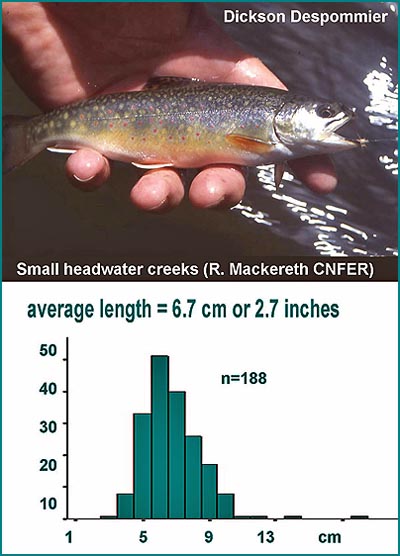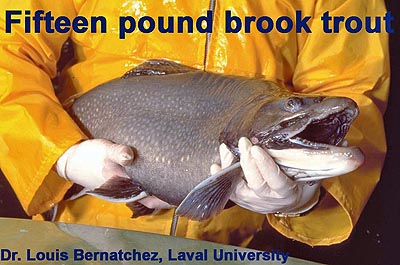What Is A Trophy?
In the world of brook trout there is a much lesser chance of angling a five-inch brookie in a small headwater creek than a five-pound brookie in the nearby renowned Nipigon system. In a study of small headwater creeks near Thunder Bay, Ontario, Rob Mackereth (Centre For Northern Forest Ecosystem Research, OMNR) and his co-workers observed that brook trout averaged less than three inches and that only two in 188 or about 1% of trout captured exceeded five inches (13 cm); while in nearby Lake Nipigon, brook trout angled on average a little over three pounds (Rick Salmon, Lake Nipigon Fisheries Assessment Unit, OMNR), and trout larger than five pounds make up more than 1% of brook trout caught. Insight can also be gained by examining the range of brook trout sizes caught on one of the spawning beds in Lake Nipigon (Rick Salmon, Lake Nipigon Fisheries Assessment Unit, Ontario Ministry of Natural Resources). A 22 inch fish in Lake Nipigon typically weighs 4.6 pounds. For anglers who live in a "relative world", the five-inch brookie angled in a small headwater creek can be considered in many regards as by far a greater trophy than angling a five pound brookie in the Nipigon system. |
The fish shows that the potential for a new world record brook trout is out there somewhere. The right set of genes in the right environment may produce even bigger fish than this one. Pleasant dreams. |
 Is bigger better? Like many other life experiences, your answer depends upon what you are looking for - in this case angling - and your sense of satisfaction or meaning after obtaining the desired result.
Is bigger better? Like many other life experiences, your answer depends upon what you are looking for - in this case angling - and your sense of satisfaction or meaning after obtaining the desired result. For those that say - don't give me science or philosophy, just give me BIG brook trout - feast your eyes on this outstanding brookie. This
For those that say - don't give me science or philosophy, just give me BIG brook trout - feast your eyes on this outstanding brookie. This